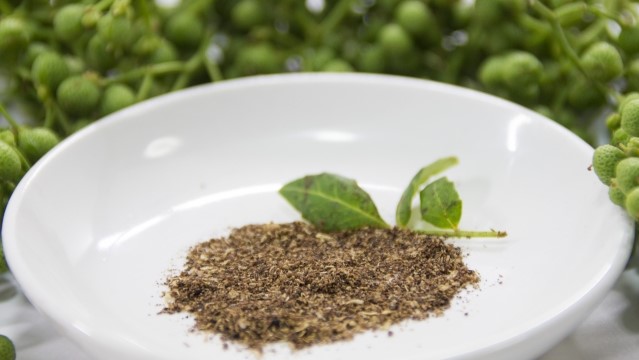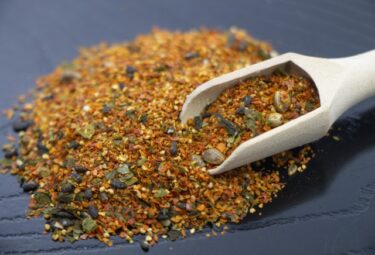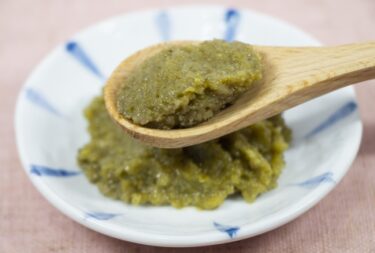Sansho is a plant of the Rutaceae family, and three main parts, young leaves, immature fruits, and pericarp, are used in Japanese cuisine. Each method is different, but each has a refreshing scent peculiar to citrus fruits.
In addition, since the peel contains a strong spicy ingredient, the dried and powdered peel is used as a spice.
It is often used when eating eel kabayaki, and it is also added to soup. In addition, the spicy ingredient contained in the peel of Sansho has the effect of enhancing gastrointestinal function, so the peel of Sansho is also used as a Chinese herbal medicine.
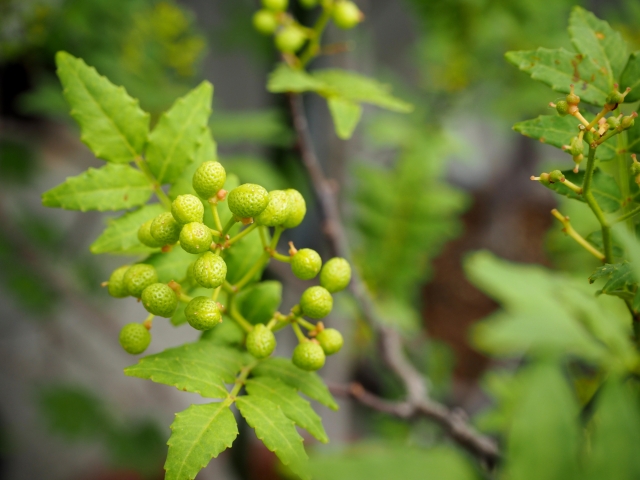
What is Sansho and can I eat it?
Materials of Sansho
Sansho
| Gluten-free | Low-gluten | Wheat-free | Low FODMAPs | |
| for Vegetarian |
| Food supermarket | Convenience store | Drug store |
Sansho is divided into three types depending on the part used
Three main ingredients are used; young leaves of sansho, immature fruits, and dry powder of ripe fruit skin.
“Kinome” (Young leaves of Sansho)
The young leaves of Sansho are called “Kinome”. It is sold raw at food supermarkets.
Kinome are used for fragrance and decoration by floating them in clear soup or placing them on simmered dishes, grilled dishes, and chirashizushi. Just before using the Kinome, place it on the palm and tap it lightly several times to crush the cells of the leaves, and the essential oil contained in the leaves will be scented.
Also, if you add white miso, sugar, and mirin to the Kinome to make a paste and mix it with various ingredients, you can make a dish called “Kinome-ae”.
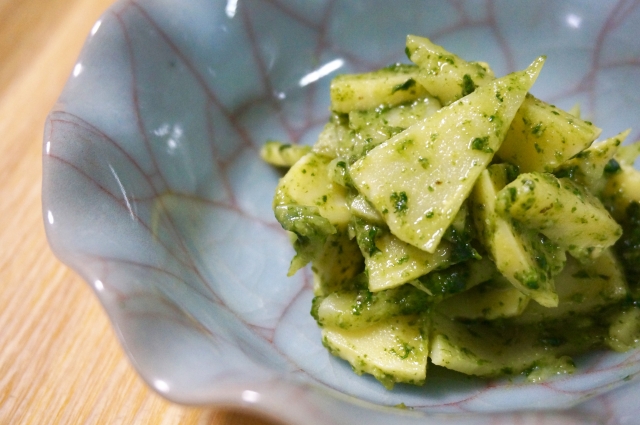
If you apply it to tofu and grill it with fire, it will be “Kinome dengaku”. Both are very delicious with the refreshing acidity and bitterness of the Kinome.
“Ao-sansho” or “Mi-sansho” (Immature fruit of Sansho)
The female strain of Sansho bears fruit. The soft fruit before ripening in early summer is called “Ao-sansho” or “Mi-sansho”.
It is boiled with kelp, soy sauce, mirin, etc. to make “Tsukudani” or “Furikake” with chirimen-jako. Ao-sansho also has a refreshing aroma and bitterness that appeals to the appetite.
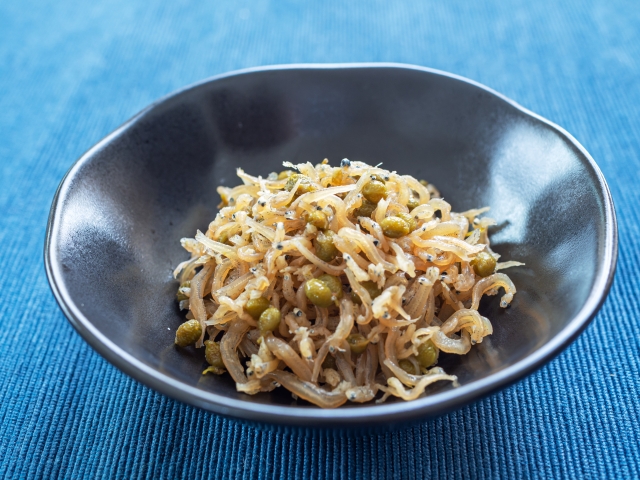
Raw Ao-sansho is rarely sold, but you can buy Tsukudani and Furikake with Ao-sansho all year round at food supermarkets. It is very delicious when eaten with rice.
“Kona-sansho” (Dry powder of ripe fruit skin)
When the fruit changes color from green to yellow in autumn, it is collected and dried in the shade. The skin opens naturally and black seeds emerge from the inside.
Powdered Sansho (Kona-sansho) is made by collecting and powdering only the peels, excluding this seed coat. Kona-sansho has long been used as a seasoning with a strong spiciness and a refreshing aroma.
Shichimi pepper, which is often used in Japan, uses Kona-sansho, and Unadon and Unaju always come with Kona-sansho.

If Kona-sansho is stored as it is, the essential oil component will volatilize and the spiciness and aroma will disappear. Therefore, it is said that it is better to store the peel as much as possible and powder it just before using it. You can also buy it at the spice section of the food supermarket.
Eels are fatty fish. Kabayaki is made by removing the bones of eel and baking it with sweet and spicy Tare sauce. The[…]
Try to eat Sansho!
How much ?
- “Kinome” (Young leaves of sansho)
$ 8-20 per 30 to 60 sheets (20-30g)
Only from April to June. - “Ao-sansho” or “Mi-sansho” (Immature fruit of sansho)
Not sold to the general public.
Tsukudani of kelp with Ao-sansho is $ 3 per 100g. - “Kona-sansho” (Dry powder of ripe fruit skin)
$ 2-12 per 10g
Where can I eat Sansho?
It’s a spice, so I don’t know which dish it’s used in. If you want to make sure you experience it, I recommend purchasing it at a food supermarket.
Precautions when using Sansho
Sansho is a gluten-free, animal-free seasoning, so most people can eat it with confidence.
Japanese writer’s comment for Sansho
Sansho is an indispensable spice for Japanese food. If you feel a refreshing citrus aroma and a spicy spiciness when you eat Japanese food, sansho may be used. Please enjoy sansho, which is not as spicy as chili peppers and has a refreshing aroma.
By the way, there is a saying in Japan that “Sansho is spicy even if it is small.” This is used as a metaphor for a person who is talented and exerts power even if the body is small, because the skin of small-grained sansho has a strong spiciness.

